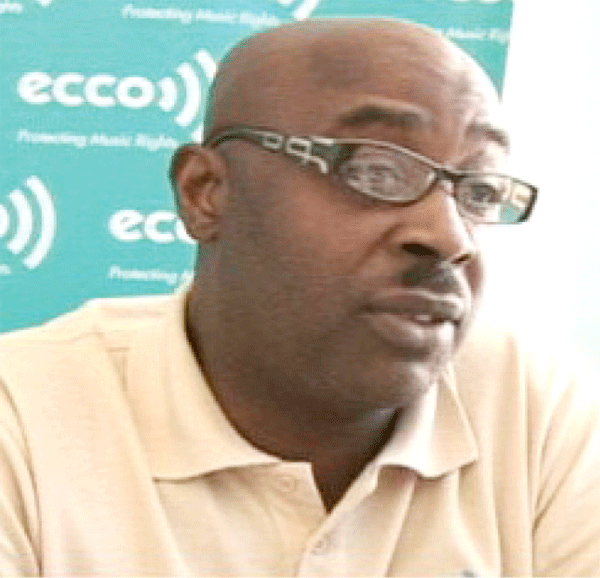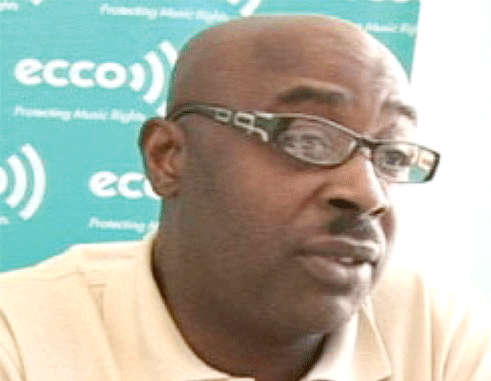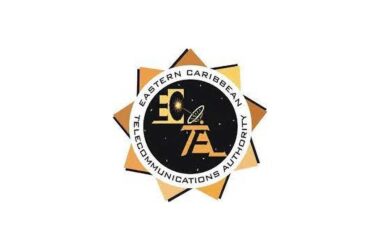ROYALTY REALITY CHECK.

YOU spent hours at your computer screen—typing, deleting, retyping—just to get your lyrics right. Followed by sleepless nights in the studio till finally you had a product you were proud to publicly release. Then came music promotion—telephone calls, email blasts, social media campaigns, radio interviews, sample giveaways; the works!
You work tirelessly on your music projects, so there is no doubt that you expect, at the very least, to reap a decent return, including from broadcast royalties. Yet when the payout is made, it’s not at all what you expected. You know your song received a fair-share of airplay, so what happened?
The answer lies in the mathematical computations of how royalties are generated, coupled with factors such as radio station earnings, number of times the song is played, the royalty value per play, and of course the number of creators on that song.
In a recent interview with “ECCO Musically Speaking” programme hosts General Manager of the Eastern Caribbean Collective Rights Organization (ECCO) Inc, Steve Etienne sought to provide greater insight into how broadcast royalties are generated and calculated, and to identify affecting factors.
To begin, Etienne noted that licensed broadcast radio stations are charged a royalty rate 2.5% of their revenue which allows them to use any of the millions of works administered by ECCO. He added that generally radio stations predominately earn their revenue from advertising. As such Etienne explained that the revenue earned from a radio station, and therefore the amount paid to ECCO in royalties, fluctuate from year to year.
According to Etienne, statistics over the last fifteen (15) years demonstrate that although there are now more radio stations in operation—an increase from four national stations in 2000, to now 18 radio stations in the St Lucia market alone —there has been a vast reduction in the amount earned by each station. Etienne provided the comparison that fifteen years ago, in 2000, the average radio station would have earned at least $1 million a year in revenue, compared to 2014’s average earnings of $350,000 per station per year. This he explains would have resulted in a drop in royalty paid per radio station from an average of $25,000 a year (i.e. 2.5% of $1million) in 2000 to a current average of $8,750 per station in 2014.
With the average radio stations playing at least 12 songs an hour, Etienne calculated that there is an average of 105,120 song spins in a year per station. Based on the average $8,750 per collected from radio stations for broadcast royalties, this equates to an average of 8 cents paid per track (before taking into consideration operational expenses of ECCO and member tax liability).
And while 8 cents per play may be the average, the reality is there are cases where it dips below this miniscule amount. Etienne offered the example that the organization was currently negotiating with a key radio station which claims (subject to their audited returns) that their projection of $90,000 in sales for 2014 was greatly overstated. A quick calculation will inform one that a value of a performance on that media house will be less than 2 cents. So while the listener or the ECCO member may hear their song being played in ‘heavy’ rotation on that station the value is relatively miniscule.
We must also consider the fact that the average song would have at least two creators, sometimes more—lyricist and composer. This means that this 8 cents or even 2 cents generated per play of that song must further be broken down per creator!
The reality is that, at a rate of 8 cents per spin, music composers would have had to have their works on constant rotation in order to generate a sizeable royalty payment. Imagine that in order for one song to generate at least $80 in royalties it would have to be played at least 1,000 times. At 2 cents per spin, 1000 plays of that one song would in turn generate a mere $20.00.
We must now couple these equations with the fact that ECCO statistics derived from radio station airplay logs, reveals that on average 90% of the music played is from foreign music creators. It’s no wonder then, that the slice of the royalty pie left for local music creators is a thin one.
So let’s break it down shall we? If 90% of the airplay is of foreign music, 10% is therefore from local music creators, this means that out of 105,120 per year on one station, 10,515 of those spins (10% of 105,120) are local content. At the average 8cents per spin, an average of $840 of the yearly revenue earned from one station is allocated to local music creators. And let’s not forget that this amount; before we consider ECCO operational costs; is subject to income tax; and has to be shared amongst a number of music creators.
And the reality, Etienne says, is that while ECCO can advocate or plead for greater consumption of local music, the company can in no way mandate or force a station to meet a certain quota of local music. Rather according to broadcasting laws, ECCO is responsible for ensuring that stations are licensed and that the 2.5% of revenue is paid towards royalties. As an organization, ECCO has no clout over what music content radio stations choose to play.
Yet while the current local landscape may appear bleak, Etienne believes change is possible, and that there are certain things which members and music creators can do, in order to earn a livelihood from their arts.
Etienne believes there is power in music creators presenting a united front, and lobbying for a greater level of local content on radio stations. Additionally he encourages members to continuously work on honing their craft and developing their music product to meet the standards of music which is constantly aired on radio stations.
The ECCO general manager also believes it important that members understand the dynamics of their local landscape and therefore do not rely solely on local music consumption, but also seek to increase their marketing and promotional drives in the hopes of generating greater airplay and performances outside of the Eastern Caribbean region. Collaborations with foreign music creators, he says is certainly one way to generate increased exposure and airplay outside of the Eastern Caribbean.
Further Eitenne believes it important that members continuously take advantage of the various opportunities offered by ECCO, such as the recent calypso in Berlin initiative, in order to aid members to increase their knowledge-base and gain greater exposure worldwide.
On a positive note, whilst overall royalties from airplay either dipped or remained the same, ECCO can boast of increased revenue from general licensing (hotels, bars, restaurants, shops and stores, etc.). This revenue is currently added to broadcasting revenue and distributed with reference to airplay which inflates the value of airplay.















so any architect should get paid based on how many people going in and out of the building he designed??
any medication is after a few years no longer protected on the patent and other company can copy and sell it as generic product, and a song is unlimited protected even when the artist pass away already?
…something is fundamentally wrong with this collecting of royalties.